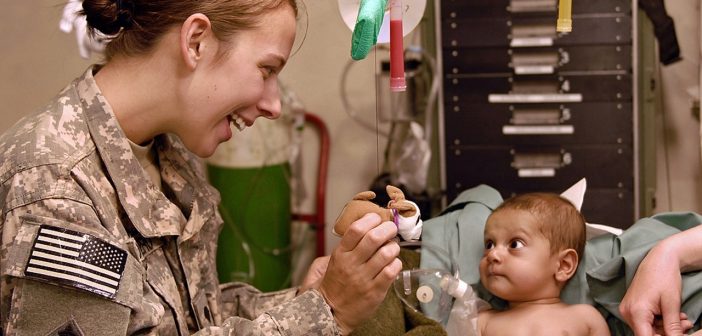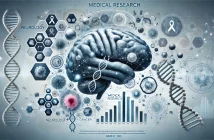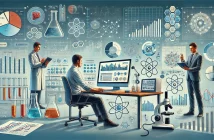Need help to develop a medical product or device? Consult a freelance scientist on Kolabtree.
—————————————–
Which are the most consequential medical device and technology innovations impacting healthcare today? It’s a long list — and it’s not all about step trackers. Beyond patient insight and engagement, innovations in medical devices, technologies and techniques should be of interest to tech industry professionals, scientists, data and clinical researchers, and anybody else who’s interested in emerging technology.
1. Analytics for Referrals
Analytics software and app- and web-based dashboards will have a long-term impact on how healthcare is administered. Care coordinators at healthcare organizations have lots of information to weigh as patients are transferred to specialists from their primary care physicians. These referral networks are using increasingly detailed information from health records to aid in matching patients with specialists based on their treatment histories, the experience level of the specialist, proximity to facilities and even objective rankings of physicians.
2. AI Screening for Clinical Trials
Successfully matching patients with clinical trials of drugs and medical procedures can deliver a lot of hope. It stands a chance of bringing relief to patients with conditions for which there is no readily available cure or treatment.
Already, IBM and other major technology companies are promising artificially intelligent platforms for healthcare that can help screen would-be patients for inclusion in clinical and drug trials. The hoped-for results include better biocompatibility, more successful outcomes for patients, and medications and treatments that work for a wider variety and larger number of patients.
3. 3D-Printable Human Tissues
Multiple universities and colleges throughout the world have research labs focused on developing 3D printers that can duplicate human tissues. In some cases, like Organovo’s proof of concept in 2016, the tissues produced by these devices demonstrated survivability and viability suitable enough for transplantation into animals.
The implications for heart muscle transplants, blood vessel transplants, and nerve grafts are significant, to say nothing of the improvements such a breakthrough would bring to already-common procedures like bone and organ transplants. The ability to produce biocompatible tissue and organs for transplantation, without a host, will help patients recover from injuries and ailments far faster than before, without languishing on a donor waiting list.
4. Wireless Heart Failure Monitors
At present, there is only one FDA-approved medical device for wireless heart failure monitoring.
The CardioMEMS system is an implantable pressure sensor that delivers real-time data to physicians about the conditions within a patient’s cardiopulmonary system that might signify the onset of heart failure. The device sends the appropriate parties information about developing symptoms in time for the patient’s doctor to intervene, including making changes to medications and other treatments. According to St. Jude Medical, CardioMEMS could reduce hospital admissions for heart failure by up to 37 percent.
5. Wearable Activity Trackers
Even among healthcare providers and doctors, the real-world value of wearable activity trackers is debatable. According to research, they can be instrumental in forming healthy long-term habits so long as they’re paired with some form of compensation or gamification mechanism.
As far as healthcare is concerned, wearables might be able to do some good. However, doctors won’t have a lot of use for the “quantified self” until the next wave of wearables and connected dashboards is ready for primetime. Some insurance companies are issuing or subsidizing wearables because they make some of our habits more visible and therefore keep us honest about how seriously we take our daily health. With additional fine-tuning and attention to privacy regulations, we can expect third-party, data-driven health services to crop up between physicians and patients to help analyze, interpret and make follow-up suggestions based on a patient’s accumulated health wearable data.
6. A Blockchain-Based Standard for EHRs
Among health providers in Boston alone, there are at least 25 different standards for the documentation, storage, and transmission of patients’ electronic health records, or EHRs. In some cases, poor bookkeeping and paper trails can result in information being scattered across different facilities.
Blockchain can help us reconcile patient records and data across hospitals and walk-in clinics, labs and pharmacies, insurance companies, and nurses and doctors in care facilities. Just like its applications in financial services, blockchain represents a way for each party to query just one immutable ledger describing each new piece of patient information and when it was entered. The result will be far fewer instances of lost records, miscommunication and misdiagnosis.
7. Remote Consultations via Video Conference
The availability of higher-quality cameras in electronic devices, faster internet and high-fidelity video streaming protocols are not new developments. However, we have been slow to realize their potential in delivering healthcare to more remote areas or to patients who have trouble leaving their homes.
It’s no secret that VA facilities are few and far between sometimes, no matter how well-run and popular they are. For some patients, a video conference with a doctor can be a welcome reprieve from what would have otherwise been a burdensome trip to a doctor’s office for a follow-up consultation. Video conferencing can be a life-changer for sufferers of anxiety and other patients who wish to seek therapy from the comfort of familiar surroundings as well.
8. Apps That Can Diagnose Ailments
There is already a lot of promise — as well as some false starts — in the field of “teledermatology” — that is, the idea that skin ailments might soon be diagnosable at a distance thanks to new technologies. There are already software developers with apps on the market, or soon to be on the market, that boast of being able to identify common skin ailments with just a photograph. Other apps would offer a way for patients to upload these skin-selfies to dermatologists for quick and easy identification.
Other technologies promise advance detection of serious health problems, including jaundice and resulting pancreatic cancer. Students at the University of Washington in Seattle have developed an app and a set of low-cost glasses that can detect signs of jaundice earlier than a human doctor. The researchers were motivated by pancreatic cancer’s low rate of survivability, which is due in part to early signs not being easily detectable. This app and device, provided it’s cleared by regulations set by ISO and other governing bodies, could save lives.
9. Closed-Loop Insulin Delivery System
2016 saw the FDA approve the first hybrid closed-loop delivery system for insulin. Living with diabetes has never been an enviable proposition, but such a delivery mechanism would stand to make managing insulin levels far easier for patients thanks to automatic testing, monitoring and real-time adjustments made by the pump.
In this field of medicine, the desired endgame is a full artificial pancreas. At present, the closest product available to that standard is the MiniMed 670G from Medtronic. It’s not a full artificial pancreas, as it still requires ongoing blood sampling for baselines and other concessions, but it’s a huge step in the right direction when it comes to relieving type 1 diabetes sufferers from some of the burdens of managing their condition.
10. 5G Connectivity for IoT and More
By 2025, the rollout of high-speed 5G connectivity is projected to have saved the healthcare industry, collectively, around $650 billion. In fact, 5G internet connectivity would render several of the other devices we’ve mentioned here even more useful in making timely interventions and other forms of intervention unnecessary. In other words, faster communication standards might even stand a chance of cutting down on unnecessary doctors’ office visits by delivering timely data between parties even more quickly.
11. More Advanced Vaccine Incubation Techniques
Finally, one of the most potentially life-saving entries on this list: next-generation vaccines.
It’s estimated that developing a modern vaccine and bringing it to market can cost anywhere from $521 million to $2.1 billion. Understandably, pharmaceutical manufacturers are looking to cut their investments of time and money when it comes to developing these drugs.
One of the ways they’re doing this is by using more advanced techniques to incubate viruses and develop cures. Previous-generation techniques used chicken eggs in the incubation process, whereas more modern techniques see researchers using insects, compatible plants like tobacco, and even nanoparticles to incubate the virus instead. The result of using these lab techniques could be millions of dollars and months or years saved on the total required to pursue a vaccine.
These healthcare innovations are making great strides in the world of medicine and have the potential to improve care for patients across the globe.
_____
Need to speak with a medical device or technology expert? Hire from 15,000+ freelance scientists on Kolabtree. It’s free to post your project and get quotes from freelancers.
Related Experts:
Medical Device Consultants | Freelance Medical Writer | Freelance CER Writer | EU MDR Consultants | FDA Submissions | Literature Search Experts | Regulatory Compliance Experts | Clinical Trials Expert | Regulatory Writers | PMS Consultants | PMCF Consultants | Biostatistics Experts | Product Development Expert







